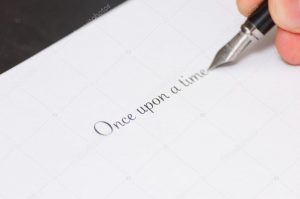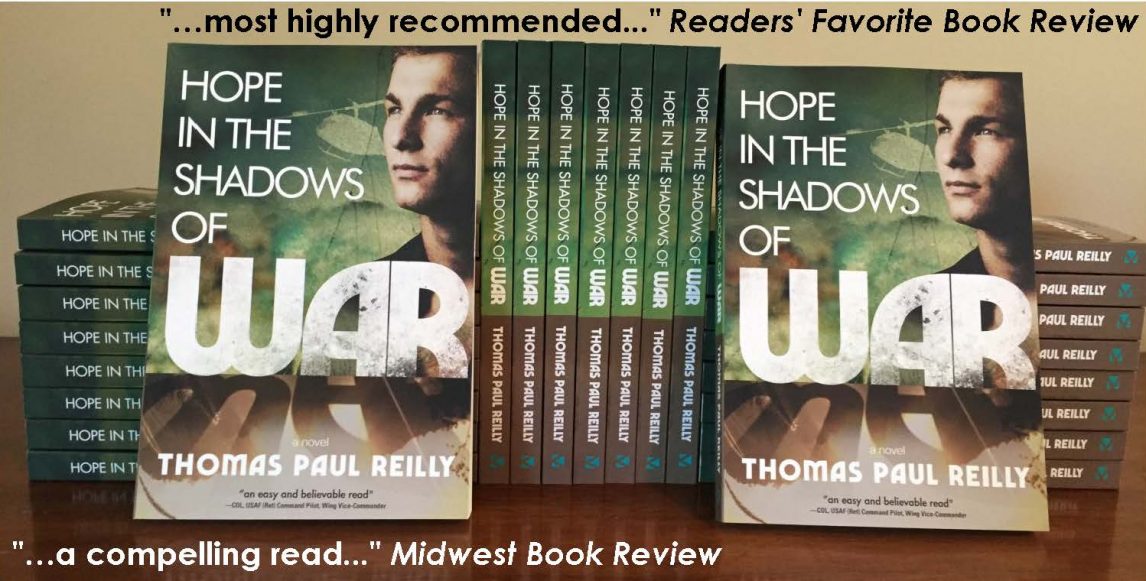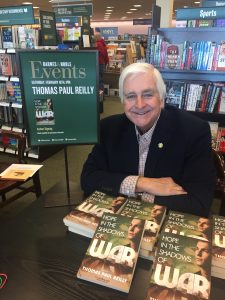
By Tom Reilly, author of Hope in The Shadows of War
To understand the history of our country, we must first understand the history of our veterans. This sentiment was delivered by an elementary school student during a 2019 Veterans Day celebration. It has taken me a lifetime of reflection to understand and to fully appreciate the magnitude of our service and sacrifice. The memories of where we’ve been and what we’ve done are as much a part of us as today’s breath. We view these memories through the eyes of a storyteller. As veterans, our stories define our history, and they have value. As we share these stories with others, we continue to serve. As John Paul Sartre said, “Man is always a teller of stories.”
History begins with story, and we humans love story. From cave dwellers who decorated their walls with stories of their time to today’s digital storytellers, history is preserved by those who are willing to share. We learn morality through fables and parables and discover truths that taste better in story. Stories ensure survival by inoculating one generation against the mistakes of previous generations. Stories facilitate the evolution of our brains to process complexity and to communicate.
Our stories educate others. As we mine through our stories, we share nuggets of our unique experiences. We preserve the integrity of our stories with the accuracy and authenticity of a personal account. Our stories fill the gaps in the family story and satisfy the natural curiosity about one’s ancestry. As we share these stories, we honor the noble obligation of a survivor—lest we forget.
Our stories comfort others as they learn that they are not alone in their trials. Knowing what we have endured reassures others that struggle is a natural part of life. This encourages others to open up about their own challenges. Courage is the root of encouragement, and others draw strength from the knowledge that we have prevailed in the face of pain and danger.
We veterans need to talk but can’t; this is one of the paradoxes of war. We stifle the horror stories of our youth even though they stream live in our heads. We do not speak the ineffable horrors of war. Silence is a tyrant that empowers memories. Telling our stories breaks the silence. Liberating our memories in story is cathartic. Releasing pent-up feelings is mental spring cleaning. Many of these experiences contain the itch of unfinished business which storytelling scratches.
Memories are not stored neatly in the file cabinets of our brains. Accessing memory is not a reliable science. Bits and pieces of our experiences are stored in different places of the brain. They are chaotic and dis-integrated. Writing about these experiences orders them, organizing them into a coherent narrative where dormant details emerge. This integration of yesterday’s experiences with today’s reality provides us with meaning. The comfortable distance between then and now offers a fresh vantage point. We can view these experiences in the broader context of a lifetime of struggle.
Writing engages both hemispheres of the brain—the emotional and the rational. The executive powers of our brains working with our imaginations season our stories with memory and reason. Writing is an act of control which reassures those who feel powerless over their ruminations. History shapes us. We cannot rewrite the past, but we can write about it and the path that we choose for the future. A friend of mine, Dr. Larry Baker, is fond of saying, “Who we are and what we become is determined by the stories we tell ourselves about ourselves.” Each of us has a unique story that only we can share.
Sharing our stories is as cheap as the price of a pencil and paper. It requires neither a college degree or previous writing experience. Our greatest challenge is rescuing memories. Simply, we tell our story on paper the way we remember it. If we choose, we can revise and edit. Our life experiences are pregnant with valuable information and inspiration waiting for us to give them birth in stories. Often times, life’s blessings masquerade as burdens. Working them out on paper exposes the blessing in life’s lessons. As we share these stories and lessons with others, we discover the blessing of giving—the more we share these experiences the more valuable they become.
Tips for writing your personal narrative
- Narrow your focus—this is a snapshot of your life, not your whole life.
- Make a list of the events you want to include in this writing and just start writing about them. You don’t have to start at the beginning—start in the middle. Write freely and put on paper as much as you can remember. One memory will likely spur another.
- Think process, not product—concentrate on getting your story down on paper. You can always go back and clean it up if you desire.
- Organize these scenes of your life in a way that makes sense to a reader: chronologically, then and now, major life lessons, etc. If you are writing several, be consistent with the format to make it coherent.
- Who is your reader—family, friends, or strangers? This affects the tone of your piece.
- Triggers to get you started:
-
-
- Photos, videos, family records, and heirlooms
- Times you laughed the hardest
- Things you regret
- Painful memories
- Times you were surprised
- Scariest moments
- My toughest lesson
- I knew things changed when
- What you took from your military experience
- Things that made you proud
- Top five events of your life
- Life would never be the same
- When you chose religion
- Most unforgettable character
- What you’re grateful for
-
- Be yourself—don’t try to get fancy writing your story.
- Write in the first person (your voice) to make it real, and write in the voice of the time when this event took place.
- Include more than just the event—how did you feel and think? How did you emerge and what did you take away from this experience? Did you grow from this event? Vivid detail and backstory add to the story.
- You may not have all the information in your head. Reach out to friends and family to fill in the blanks.
- Tell the truth—authenticity is a powerful characteristic of effective writers. Truth makes telling the story easy and hard. Embellishment and fabrication may add some color and humor, at the expense of authenticity.
- Invite readers to join you. Show, don’t tell. Bring the reader into your story with enough detail to facilitate the passage. Use emotion to help the reader feel.


Tom — I’m a lapsed MWSA member and found you via FB link. Put this link on two FB submarine pages, and one Vietnam veterans one for those who might want to write their story.
Your Fields of Stone video and narration are beautiful; (Is one scene — with bugler and headstones — from Arlington? I ask because I posted on my FB timeline TAPS played by one bugler and thought it was from Arlington; one tombstone adjacent to bugler is for Bruce xxx. I think that it’s wonderful that you’ve reached out to vets, including to write to help heal. Nancy Yockey Bonar (FB), Medina, Ohio nanbonar@yahoo.com (late brother sub CO during Vietnam War, prog. mgr., testing/development successful launches of Tomahawk missile from surface ships, submerged submarines.)
Nancy, thanks for you comments. I believe the bugler is at Arlington. I took most of the pics at Jefferson Barracks and sprinkled in a few from .gov sites labelled for reuse.